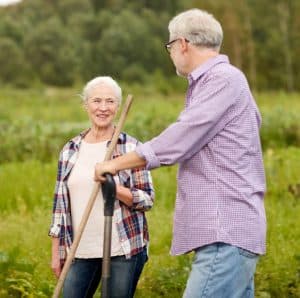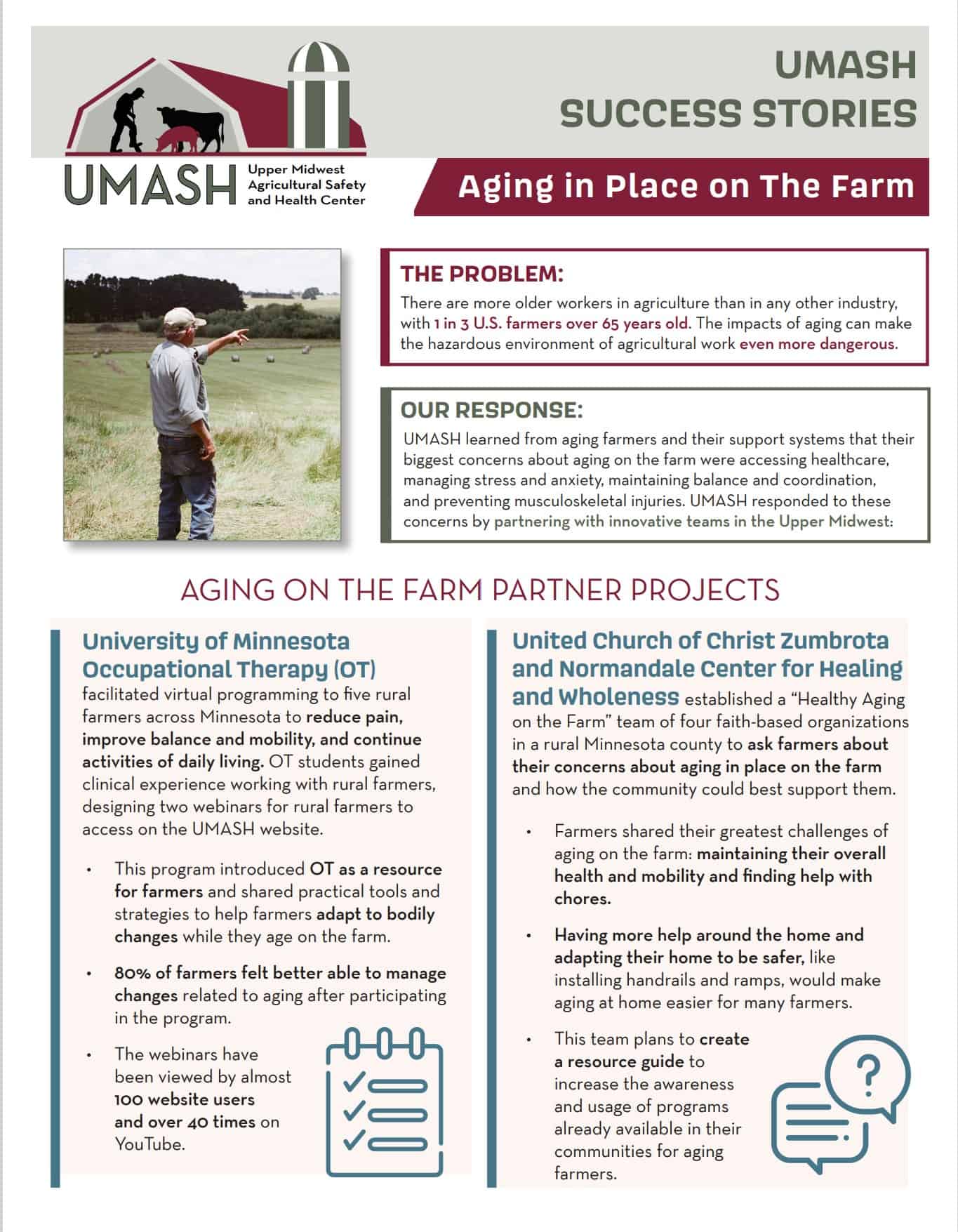THE PROBLEM:
There are more older workers in agriculture than in any other industry, with 1 in 3 U.S. farmers over 65 years old. The impacts of aging can make the hazardous environment of agricultural work even more dangerous.
IMPACTS OF AGING:
- Response Time
- Vision
- Hearing
These impacts can become dangerous when working on the farm with hazards like:
- Pesticides
- Animals
- Driving
1. We Consulted the Community
We started by listening and partnering with the agricultural community and their support systems. Aging farmers and their communities participated in a survey and two regional community forums. We asked questions like: How, as a community, can we support the health and safety of aging farmers and farm families? What are the challenges? What are the opportunities?
Participants identified the following health and safety priorities:
- Financial worries
- Musculoskeletal and repetitive stress injuries
- Fatigue and sleep issues
- Balance and coordination problems
- Operating heavy machinery
- Stress and anxiety
- Access to healthcare
2. We Partnered to Implement Community-Based Projects
After listening and collaborating, we leveraged UMASH’s Emerging Issues program to partner with community organizations to fund the following innovative projects that will support healthy aging on the farm:
Based on our community-engaged work, UMASH collaborated to develop the following resources to raise awareness about and support the well-being of aging farmers. Jun 5, 2020 This video addresses the current aging population as it relates to farmers, farm families and workers. The average age of farmers is 58 and many choose to continue to work and live on the farm as it is a way of life. This video highlights: Farming and ranching is rated one of the most dangerous and physically demanding occupations in the United States. Aging farmers are more vulnerable to injury and illness. Agriculture as an occupation presents unique challenges for retired or semi-retired farmers and employees. Rural communities often have limited access to health care. The video is intended to bring awareness as a community to the specific issues with aging in rural America. Let’s start the conversation to promote the safety and health of our agricultural neighbors. Occupational Therapists (OT), among many other roles, can help individuals and their families navigate aging-related changes. OTs understand the connection between a person’s identity and their ability to engage in desired daily activities. Older adults living in rural communities, like many farmers, often have limited access to OT services and strategies。 To support aging farmers, several students at the University of Minnesota from rural and farming communities are bringing practical solutions right to farmers’ living rooms. They have developed a series of free videos, with accompanying worksheets and resources to support healthy aging: Occupational Therapy: Your Productivity and Wellness Advisor Part 1 introduces Occupational Therapy (OT) as a valuable resource to farmers. The video focuses on the relationship between a farmer’s identity, sense of wellbeing, and ability to stay productive when facing challenges. Practical Solutions to Maintain Productivity and Wellness Part 2 shares a wide range of practical strategies and tools for maintaining productivity and safety on the farm as physical, sensory, or cognitive changes occur. The solutions address vision and hearing changes, common aches and pains associated with arthritis, and changes in thinking and memory. For more information about this project, check out: https://umash.umn.edu/aging-umot/ UMASH partnered with AgriSafe Network and the Midwest Center for Occupational Health and Safety to host Aging and Parkinson’s Disease in Agriculture, a webinar available on demand. Featured presenters include Averi Olson, UMASH Occupational Therapy doctoral capstone student, and Dr. Kristen Pickett, UMASH Active @ Home Partner Project lead. Learn about the effects of Parkinson’s Disease and what it means for agricultural work, and hear about rural-specific tools and resources that help maximize farmer functioning. The webinar is available on demand, for free, and can be used to obtain Continuing Education Units for nurses, occupational therapists, physical therapists, and other professionals.
3. We Continue the Conversation and Share Free Resources
 Occupational Therapists
Occupational TherapistsSupporting Aging Farmers
PART 1
PART 2

